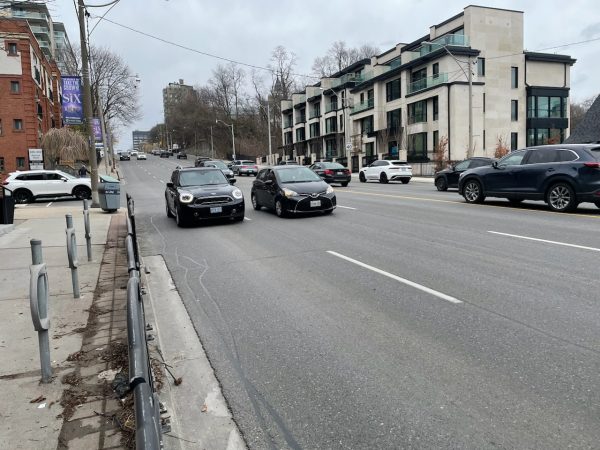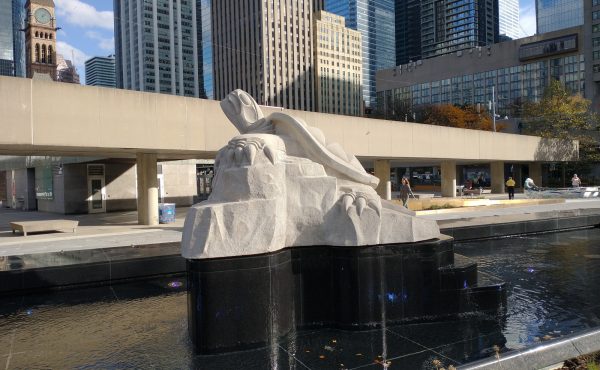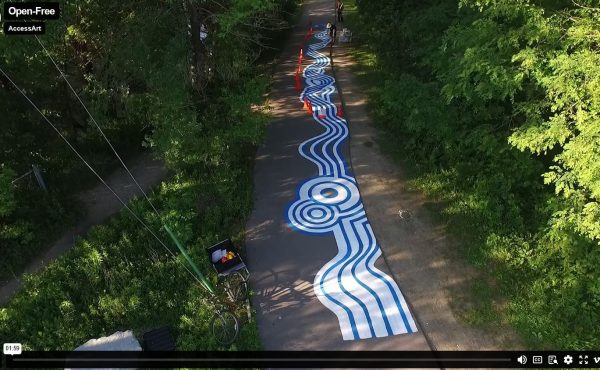If there is a good way to make city streets safe, Avenue Road is a bad example.
By the time a proposed interim safety plan for Avenue Road reached City Council at the end of June this year, community groups had been demanding action for seven years; the plan for the two-kilometre segment had been chopped into three shorter sections; and yet another family was mourning the death of a loved one on this dangerous roadway. With more timely action, the story would have had a happier ending.
In late March 2024, after comprehensive public consultations, the city’s Infrastructure & Environment Committee was ready to debate a solid plan for interim safety measures along this six-lane, high-speed stretch of road. But the plan disappeared without a hearing. One month later, Ali Sezgin Armagan was killed cycling on Avenue Road, south of Davenport Road. Suddenly, a 700-metre cycle track — previously recommended in the staff proposal — was back on the committee’s agenda.
The remaining part of the Avenue Road project was divided into 280-metre and 1,000-metre segments, split between the wards of Councillors Dianne Saxe and Josh Matlow. The shorter section, between Davenport and Dupont Street, was debated by the Toronto & East York Community Council on June 11, but confusion about last-minute adjustments — including a new, controversial centre median at Dupont — meant the plan was sent to council without recommendations. Council passed the plan, less the median, on June 27 with no debate. The remaining segment of Avenue Road in Matlow’s ward has yet to re-surface.
The purpose of Toronto’s Vision Zero Road Safety Plan is to prevent road deaths – not to react to tragedies. (Sadly, two other cyclists have been killed over the last decade in the same stretch where Armagan died.) Vision Zero declares that “human safety should be prioritized over all other objectives within all aspects of the transportation system.” Facilitating the historic privilege of motorists to drive anywhere, anytime, and in any sized vehicle (and typically alone) is no longer the priority.
In Toronto, safe roads contribute to another key policy goal: promoting active transportation to reduce greenhouse gas emissions. In fact, the TransformTO Net Zero Strategy aims to convert to walking, cycling, and transit 75% of all trips under five kilometres by 2030. Time is quickly running out.
Respondents to the most recent public consultation for the Avenue Road safety measures were evenly split between people who wanted a safer road and those who worried about (motor) traffic congestion. What else is new? While the results could have been treated as a compromise — after all, the plan simply reduced six lanes to four (but more at intersections) — city plans and policies should easily have tipped the scales toward action.
Road safety must be the default position, not an afterthought. And yet we continue to treat public consultations as a ritual that begins with obsequious apologies to motorists for any potential inconvenience – even though the success of city policies depends on significantly reducing driving. It’s no surprise that delays in remedial action are measured in years, and blood.
Since the beginning of this year over 100 people have been killed or seriously injured on Toronto roads. And in this particular area of the city, it doesn’t even appear to matter that a substantial majority of residents already walk, cycle, and take transit to get around.
By emphasizing the right to safe roads as a starting point to public consultation, the onus would shift to the defenders of the deadly status quo. Unfortunately, the resistance to change — despite the casualty toll and worsening climate crisis — continues to be loud, its volume exaggerated by the oversized influence of the motorist’s perspective in our political, corporate, bureaucratic, and even neighbourhood organizations, including conservative residents’ associations with ready access to city councillors.
The cycle track is now scheduled to be installed before the end of July. That’s good news. But if the death of Armagan could motivate such a short timeline, why couldn’t our Vision Zero plan have prevented his death in the first place? It’s a question City Hall must answer, quickly.
It’s time to take the words of Vision Zero and the right to safe roads seriously. Seven years — and counting — is too long to make (part of) Avenue Road safe.
Albert Koehl is the coordinator of Community Bikeways, an environmental lawyer, and author of Wheeling through Toronto, A History of the Bicycle and Its Riders (University of Toronto Press).





One comment
How long did it take to widen Avenue Road by adding more traffic lanes and narrow the sidewalks in the 1950’s? By the 1960’s, Avenue Road went from being a “destination” to being a “want-to-be expressway”.